Here’s another go-round about ideas for Gerard’s book cover
Wow! What a lot of suggestions, much appreciated. However, I realize on reading them that I have more ‘splaining to do. Thus, this post.
(1) I originally thought of course I’d use a photo of the monument on the cover. But I ran into lots of problems, and blurriness was only one of them. I’ve been to the monument, and I’ve also seen many photos of it. The monument and the name can be photographed from a distance that allows you to see it’s a monument by the shape of it, but that distance leads to a problem and the problem is either blurriness or faintness of the letters of the name. These of which can be somewhat corrected, although years ago I visited there with a friend who had a very good camera and lens, and the photos still weren’t very good.
What can’t be corrected, and what is true of all the images I’ve seen of the actual name in the stone, is that visually it’s a rather dull photo with a dull color if the color is true (gray). Unless someone has already read Gerard’s essay “The Name in the Stone” and is already familiar with the story it tells, I don’t think a photo of the monument is all that arresting. It’s kind of bland and colorless, and the color is in a sort of middling range. What’s more, there’s the problem – and believe me, it’s a real problem – of putting letters on top of letters when designing a book cover. That is, when superimposing the text of the title and author on a bunch of other names on gray stone, a cover is created that can be visually confusing. And it’s surprisingly hard to make the letters “pop” against the gray unless you make them chartreuse or something equally Day-Glo, which I don’t find attractive.
And then there’s the whole idea of having a cover with a photo that literally illustrates the meaning of the title. I found, when I actually designed cover after cover of this type, that it started to feel limiting. There are almost 50 essays in the book. Only one – the title essay – is about the name in the stone. But it’s not really about the monument itself, although it most definitely touches on that. It’s more about Gerard’s attitude towards seeing his own name in the stone, his relationship with his family and their memories of his late uncle who died in the war, and his growth as a person from college student to the man writing the essay. And that’s just one essay of so many. Therefore, putting the photo of the monument or other parts of the park such as the eagle sculpture on the book cover started to seem to me as though it would be misleading about the nature of the book’s contents.
As for my going down to New York again and taking photos, it’s not happening. That’s a big trip for me, and as I said, I’ve actually been there before and tried to get good photos, unsuccessfully. Also, such photos probably would have the drawbacks I mentioned. But if any of you want to go there in the next week or two and try to take photos and then send them to me – please, by all means, do so. But I’ll caution you by quoting no less an authority than Gerard’s essay itself, 2007 version. Gerard was a good photographer with excellent cameras. He published the essay many times after that and never indicated that the situation had changed [emphasis mine]:
[The name is] on the far left column on the third stone in on the right side of the monument looking towards the sea. The name is usually in shadow and almost impossible to photograph. …
Note: Since this essay was first written in May, 2003, several thoughtful people have supplied me with photographs. As you can see, the name still remains difficult to photograph.
The photo someone sent him is the one I used in that first book cover in Saturday’s post.
It’s also harder than you might think to get something that would work on a book cover in terms of size, shape, sharpness, contrast, and visual attractiveness. I actually already have access to some clearer photos that are neither mine nor Gerard’s, and I didn’t think they’re very successful when I tried designing covers with them just as an experiment. For example, here’s one with a photo from Google Street View. I can put it in this blog post and attribute it (which I just did), but it is not allowed on book covers at all, even with attribution. However, I’m offering it as an illustration of what’s possible if someone went down there and took such a photo (by the way, these cover photos are screenshots of prototype covers but the real covers would have text that looks sharper than this, and the diagonal lines and the words “Book Brush” wouldn’t be there on a real cover, of course):
Here are some book cover examples that use a closeup photo from another site. I would also probably need permission if I used this photo on a book cover, and I may or may not be able to obtain that permission. The photo is very clear, but I think it doesn’t integrate all that well into a cover. I’ve tried many composition ideas, as well as fonts and colors, and it just seems dull to me. I think this might be the best of the lot:
A similar effort of mine; whether better or worse I’m not sure:
This next one uses the same photo but blows it up to be the background for the entire cover, and then superimposes the title, etc., on it. I think it’s visually confusing. Plus, only part of the name is on the front (right) and part on the back (left). I didn’t bother to finish the back cover on this one, but it would be similar to the others where I’ve put some words and a photo on the back. The letters here are red and somewhat 3-D in an effort to make them more visible. I’m not sure I like red, but I discovered that other colors are really hard to see (except the aforementioned Day-Glo ones):
(2) I can find copyrighted photos of the eagle statue at the monument site. But in that case I’d have to pay major bucks to use a photo like that on a cover. The eagle is visually dramatic, and using the eagle would be okay if the book were about war heroes or something like that, but it’s really not for the most part. And, unlike the covers with a photo of the actual name in the stone, the eagle statue doesn’t explain the title unless the reader happens to already know that the sculpture is in the same park as the monument. So using the eagle doesn’t make sense to me. The essays are very varied in nature, as I’ve said and as Gerard’s regular readers are aware – philosophical, humorous, sarcastic, personal stories, spiritual, and expressing awe at nature and the universe. I hope the book appeals to his readers, but I hope to reach a wider audience, too, if possible.
(3) The back of the book as I’ve done it on these book cover ideas is incomplete. The big space between the quote from the book (on the top of the page) and Gerard’s photo and bio (on the page bottom) is for blurbs from other authors, which I plan to try to get. That’s another one of the tasks involved.
(4) The reason the book is subtitled “and other essays,” rather than something like “and other works” or “collected works” is because it is composed only of essays. That’s how Gerard had planned it. As for his poetry, I’m planning to edit a second book containing just his poetry.
(5) There are plenty of fonts and colors available; these are just some ideas. I probably will have a book cover designer help with that. But yes, to answer a question some people had: these days, book covers often mix fonts, including using block print in one part and script in another. Go to any site that has templates and you’ll see (for example, this). I own quite a few older books that do it, too; it’s not just a new fad.
(6) Here’s the other style book cover that quite a few people preferred from the previous post. I really don’t know whether I’ll end up using a monument names photo or something else like this. I go back and forth with it. But I think this one has the advantage of being bold and simple, as well as conceptually open-ended. The photo is also free for use. By “open-ended” I mean that this photo could conjure up almost anything in the mind of the reader: strength, endurance, nature, rock of ages, and probably other things. It’s not THE name in THE stone, of course. But Gerard’s name is on the stone on this cover, if only as an artistic device. So it is at least slightly illustrative of the title without being a literal demonstration of it. Inside the book there will be a photo of the monument with the name, the blurry one, but it won’t be as blurry in the book because it will be considerably smaller. So it’s not as though a photo of the monument won’t be somewhere connected with the book.
(7) All of the photos of covers I’ve posted so far have been for the traditional book version. But here’s a cover idea for an ebook version. What do you think?:
ADDENDUM: For anyone who likes the covers with the “name” photos of the monuments – as I said, there are copyright issues with the first one that are insurmountable; it cannot be used on a cover, period. And there are possible issues with the second, the closeup one. I included them here as examples of what might be done with the right photos, but I have neither the time nor the equipment nor the skill to take any. I hope to get the book out within the next couple of weeks, before the holidays. So really, if anyone is in or near NYC and is a good photographer and wants to give it a try and send me the photo, please do!
The ebook cover, however, has no copyright problems.

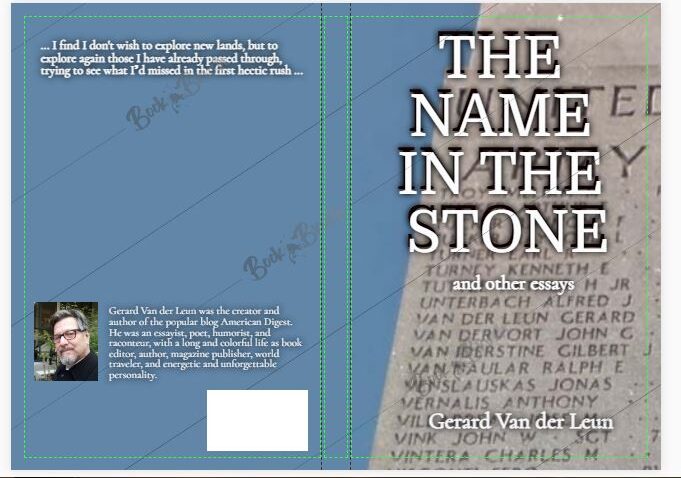
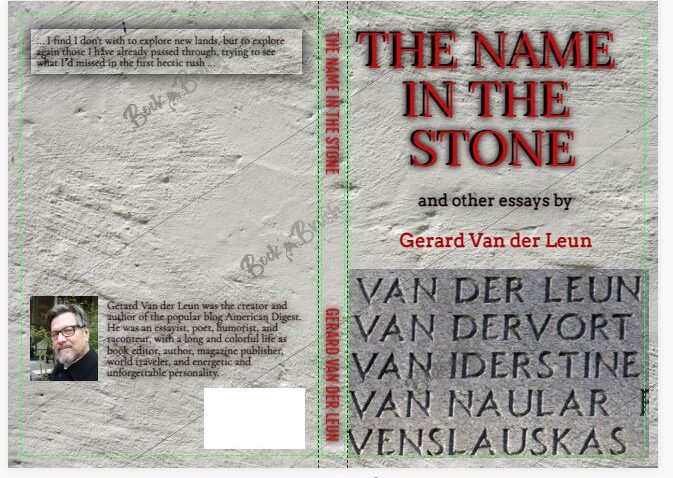
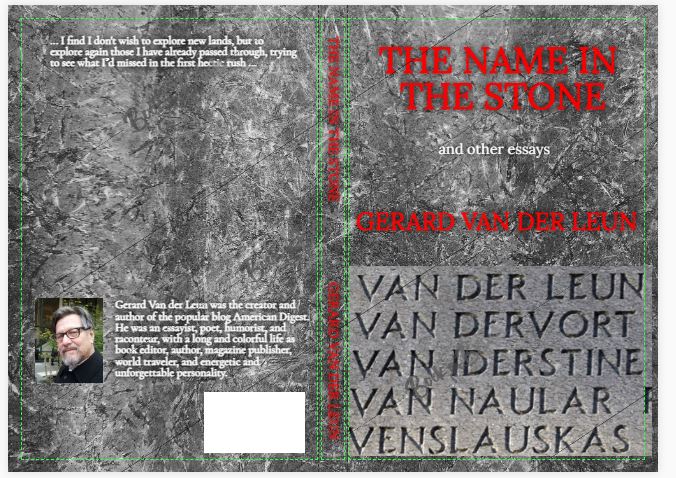
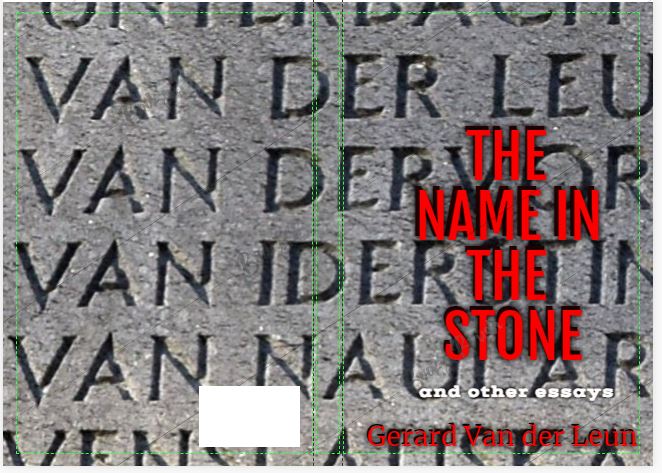
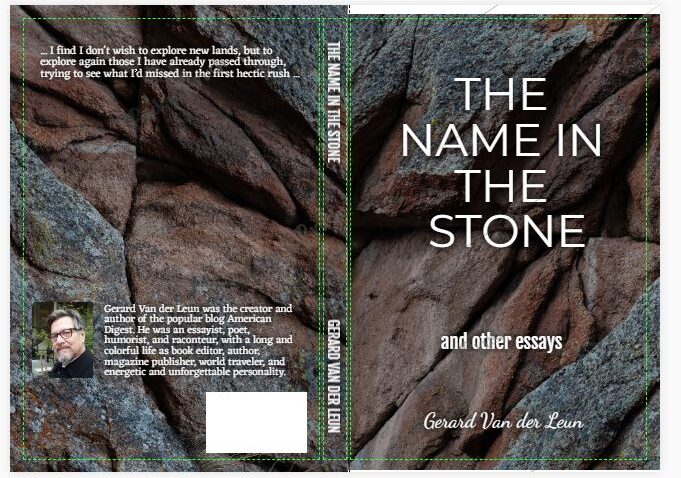

The ebook version is nice. Why not also use it for the hardcover?
DisGuested:
Possible copyright issues for that for both an ebook and a regular book. It’s complicated; I’m actually not sure there’s an issue, but there may be. In addition, I’m not especially keen on it. It seems very harsh. It reminds me of the TV show Dragnet. I don’t know if you’re old enough to recall it, but I certainly do:
Neo: Thanks for the response. If there is not an issue I like it for its simplicity. It doesn’t seem too harsh, maybe stark – but in a good way?
Dragnet was a bit before my time but looks cool. Even the end of that clip appeals to me. Guess I like things carved in stone 🙂
I would use the monument names photo from the first picture, with the text and background (in place of the blue) of the ebook cover. The dark background would highlight the name and the text is nicer.
Neo, I am so sorry you have to deal with this, I hope the process of dealing with it gives you a measure of peace and comfort. I didn’t say it earlier, but I have been a lurker for a long time and I am very sorry for your loss.
Neo:
I have not visited the monument, so perhaps I am not understanding all the problems surrounding the taking of a photograph. I do understand that the stone is in a bad location for getting close enough to photograph it, and is facing the wrong direction for lighting.
Perhaps using a drone to take a photograph would take care of the first issue. Just a thought. Some of your readers are surely close enough to try a drone photo.
Just spitballing. Know that we all wish you strength and healing as you work on this labor of love.
The first one is the best. It’s not just that his family name was on the monument. His own name was. The cover that was voted tops last time (second from the end here) is also good.
I still like the one you refer to in (6), and especially since you enumerate many of the problems with the others!
Kate:
And indeed I may end up with that one.
For anyone who liked the covers with the “name” photos of the monuments – as I said, there are copyright issues with the first one that are insurmountable; it cannot be used on a cover. There are possible issues with the second, the closeup one. I included them as examples of what might be done with the right photos, but I have neither the time nor the equipment nor the skill to take any. I hope to get the book out within the next couple of weeks, before the holidays. So really, if anyone is in or near NYC and is a good photographer and wants to give it a try and send me the photo, please do!
I like the ebook too. For the ones with red text, I think if you put a solid color box over the image but behind the text it would help it stand out without the dayglo red. I don’t know if that makes sense, so I’ve taken 25 minutes to draw up a couple examples of what I mean on Canva. If you want to check it out, shoot me an email.
I go for #1.
I understand that particular photo from Google Street View is not available, but if a robot camera roaming the streets can get the shot, I don’t understand why a human with a good camera and a variety of lenses can’t.
Of course an imminent deadline changes the calculation.
I like the ebook version – the color is warm, the chiseled names stand out, the names are at an angle that is different than the shadow angle which also throws a shadow on the title words. “And other essays” words are obvious since they are closer and larger size than the other options.
I can clearly see “van der” at the top and bottom of the page. While I understand that the stone words are part of some memorial and the first essay may talk about it, I also know that there are other essays.
This is the only version that would draw me to look further into the book. In comparison, the other covers are “colder” which makes me wonder if all the essays will be darker in nature
huxley:
I assume a human could get the shot. I am not that human. I don’t know that human. I’m looking for that human to take it in the next two weeks.
Nobody seems to want to visit Manhattan.
You may detect a note of weariness in me. I’ve been working so hard on the editing part, and have more work to do, but I never thought much about the cover part and when I did I assumed it would be easy to use the photos already I have. Not so!
You may detect a note of weariness in me.
neo:
Sure thing. Understandable.
Where exactly is the monument?
MrsX:
Battery Park, southern tip of Manhattan.
Neo: How about something very simple, minimalist like you often see with some classic works? Given that it is a collection of various essays, why not have it plain – maybe a dark navy blue background with gold lettering – leaving it up to the imagination/to be discovered as to what the title means…
I’d go with the first one. Most of the people reading this book are going to know Gerard, and they’ll know the story, and it works. Yeah it’s gray and maybe it’s not “visually arresting” but for me, it’s nice.
I’ll say again Gerard is so fortunate to have you securing his legacy!
Cheers
Things are hard for me right now so I haven’t been commenting, but I went to Gerard’s blog every day for almost 20 years so this is important.
It needs Gerard’s whole name, and the obvious cut stone.
Yet I like the drama and stark strength of the dark one (6).
But I think it also needs a blurb on the front cover to elicit curiosity, saying something like:
“Seeing one’s name carved into a stone honoring the dead can help spur one into a lifelong quest for answers to honor the living.”
Thank you, Neo, for your devotion and courage. (I’ve also read your blog for around 20 years.)
I favor the first one.
Totally OT. I know your love of Bee Gees so I thought you might enjoy
this.
Dear Neo:
I really like the E Book version! Lighten up the shadow just a small bit and it is perfect!
Second thought: did Gerard specifically say that he wanted this to be the title of the book? If not, maybe a search of the other essays might provide a better idea.
Take a walk–these are the last lovely days of fall–enjoy some time and fresh air!
Anne:
Yes, he specifically wanted this as the title.
Oligonicella;
Such a cute video! That little girl really does a good job.
I think the last two images are pretty nice. Maybe use a different color text on the e-book one? It looks a bit bland to me.
I also like the second image, but am not crazy about the red-brick text. Not sure what would be better, though.
I’m with Minta: “It needs Gerard’s whole name, and the obvious cut stone.”
I also like her blurb idea.
Is anyone keeping track of the voting?
Sorry that this has gotten so complicated for you. I’m not very creative as far as visual arts go, but a thought came to me: Gerard took so many great pictures; maybe one of those would somehow fit. I’m thinking especially of his nature photos and his essay (s?) noting how one can take an empty picture matting frame and toss it onto any natural space and the result will be lovely.
Consider that most copies of this book–either electronic or physical–will be bought online.
The cover of this book should therefore look good on a computer or tablet screen.
A nice cover will help sell the book, but it’s the “content of its content” that will get the book read.
I think literal just doesn’t work and leads to nothing but frustration. After your first post I tried to recall covers that had caught my eye, and only one of them was even a bit literal. Most had symbolic elements, but they served to rouse curiosity and were not literal, as in photographic. Photographs have too much distracting detail. Now that I think of it, what makes a photograph succeed is framing and choice of foreground subject, so that the details recede into the background.
The ebook version works for me.
1. I like #7.
2. Recall that I wrote that a drone shot of the monument might solve your problem.
3. Thumbnail of Gerard on the back is TOO SMALL.
I’ve come around to the fact that – for the physical book – you are better off WITHOUT a picture on the monument.
Think subtext. In a great movie like “Ford v. Ferrari” the dialogue isn’t “on the nose.”
Using a picture of the monument is too much on the nose.
Unless someone has already read Gerard’s essay “The Name in the Stone” and is already familiar with the story it tells, I don’t think a photo of the monument is all that arresting.
Good point. Prospective readers come with their own ideas about what “The Name in the Stone” might mean. “Name” and “Stone” come with a lot of connotations. Maybe you don’t want to tie those down to one meaning too quickly. It depends on how much more there is in the book than the title essay. Your call.
Cornhead:
The book is 9 X 6, so the thumbnail won’t be so small. But also read #3 above.
Title the book “Van der Leun” and just use the photographed image of the name without overlay.
What about a photo of a rubbing??